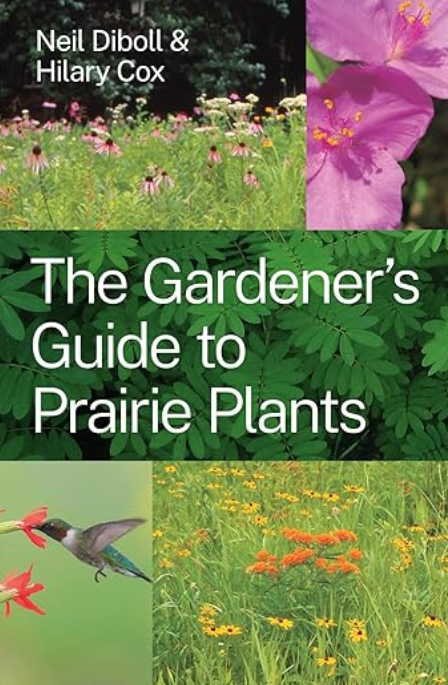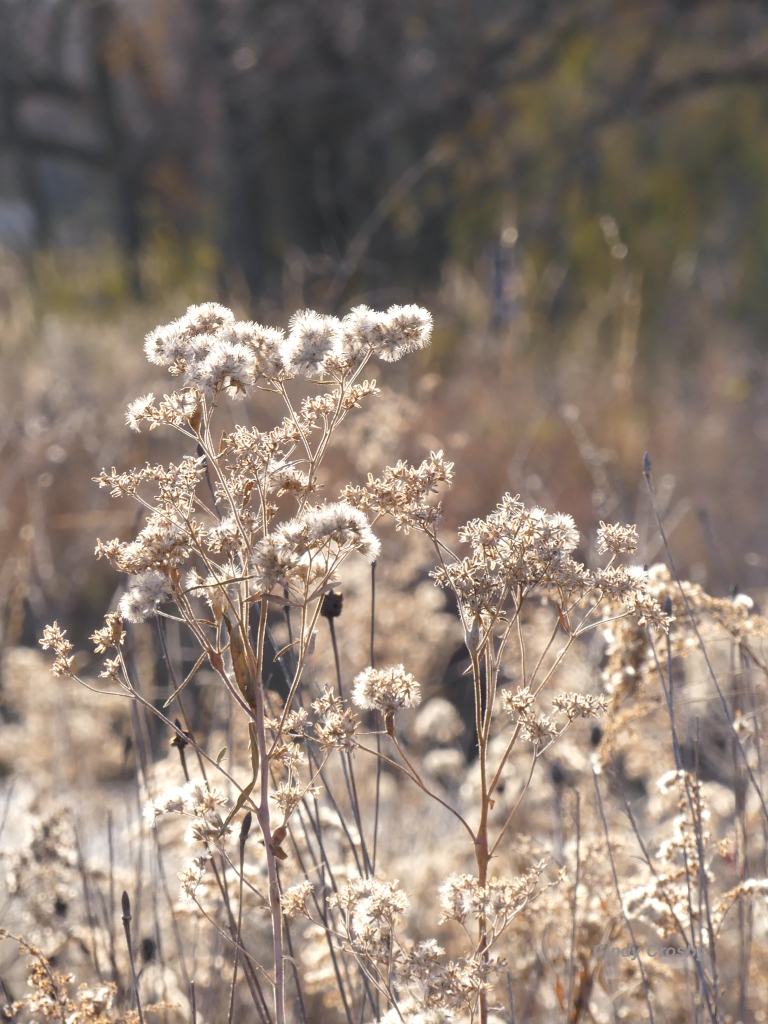“So many books… so little time.”—Frank Zappa
*****
Over the past weekend we ate too much pie. We went for our annual holiday hike. Played a lot of board games. And now, at the end of the holiday weekend, snow has fallen and the temperature hovers in the low teens. It’s the perfect day for taking a “hike” through the bookshelves, and reading by the fireplace.

Almost every year since the beginning of this blog in December of 2014, I’ve written an annual prairie books roundup. As the always-awesome John T. Price writes in his book, The Tallgrass Prairie Reader, “the relative absence of tallgrass prairie literature…is another kind of extinction.” So I’m grateful whenever I see any new tallgrass prairie books hit the shelves of my favorite independent bookstore, or my beloved local library. And I’m thankful for all of you who still support books, whether in print version, electronic version, or listening to them on audio. Long may you read!

Over time, I’ve expanded the reach of this tallgrass prairie book round-up to also include others that encompass the larger prairie region, as well as our prairie peninsula. I also have a few classics that I reach for again and again. And yes—I might slip a few of my own books in there. (My publishers like that!).

This is by no means a comprehensive list; rather, just a sampling. My hope is that you’ll find at least one new book to gift someone for the holidays, or to check out of the library for yourself. At the very least, I hope you’ll find a familiar favorite or two to remind you of the delights and joys of the tallgrass prairie and its communities. And of course, after reading this post, I hope you’ll share some of your tallgrass prairie must-reads in the comment section below.

On Friday, Dec.1, I’ll be kicking off the last month of the year with a morning lecture, Bison Tales and Tallgrass Trails, at the Morton Arboretum in Lisle, IL, just outside Chicago. I’ve been immersed in bison books for the past several months in preparation for that program, and “herd” about others I’ve not yet investigated, so this particular book “roundup” is…er…well…”heavy” on the buffalo. Okay, enough bison puns. Let’s take a look.

******
It’s difficult to name anything Ken Burns doesn’t do well, and the companion book to his latest film The American Buffalo is a must read. Written with Dayton Duncan, Blood Memory: The Tragic Decline and Improbable Resurrection of the American Buffalo, is a treasure trove for any prairie lover, and an engrossing read for history buffs. The 217 color photos alone are reason to splurge and buy the book, or put it on your holiday gift wish list.

The four-hour film, The American Buffalo, is also available for live-streaming, purchase, or for DVD loan at your local library. It’s a real heart-breaker, so be warned you’ll have to reach for the Kleenex.

At this writing, you can still stream it on PBS by clicking here: The American Buffalo. I watched this intense two-part series on PBS in mid-October, and was grateful for a break in the middle to gather my thoughts and emotions. I came away with a deeper understanding of the relationships between bison and many Native Americans, as well as the importance of conservation. A short film, “Homecoming,” is also included which spotlights the InterTribal Buffalo Council and its work with sites like Nachusa Grasslands in Franklin Grove, IL, to restore buffalo to tribal lands “for cultural and spiritual enhancement and preservation.” Also very moving.
******
An oldie but goodie is Dan O’Brien’s Buffalo for the Broken Heart: Restoring Life to a Black Hills Ranch (2002). In it, O’Brien tells his personal losses begin to be redeemed by bringing bison to his ranch and attempting to “make the land whole again.”

As a memoir, rather than a historical account or academic tome, this is an interesting contrast to some of the other bison books here. O’Brien approaches prairie restoration and bison recovery as a commercial rancher. Around 2001, O’Brien founded Wild Idea Buffalo Company and Sustainable Harvest Alliance on his ranch in South Dakota, where he previous ran cattle. He has a dream of supplying grass-fed bison as part of a healthy diet and as part of restoring the prairies of the Great Plains. O’Brien also appears in the Ken Burns’ documentary (above) The American Buffalo.
*****
If you’re up for a deep dive into academia, People of the Ecotone: Environment and Indigenous Power at the Center of Early America by Robert Michael Morrissey is a fascinating look at the prairie peninsula, and how the tallgrass prairie and bison were two powerful dynamics in the lives of indigenous peoples. Because he puts the heart of the ecotone in Illinois, as a prairie steward, I found this particularly relevant to my work and eye-opening in giving me more context for it.

My prairie co-steward, John, recommended this book to me, and as with all his recommendations, it was stellar. I was especially happy when I came across a photo in the early pages of a prescribed burn at Nachusa Grasslands from talented prairie photographer Charles Larry. Check out Larry’s website here for more great bison and prairie photography.
Anyone who wants to better understand the tallgrass prairie region should read and discuss this intriguing book. The bibliography will also spark more books and articles you’ll want to investigate.
*****
As Jeff and I were Christmas shopping at a local honest-to-goodness-real-live bookstore this past week, I happened across Return of the Bison: A Story of Survival, Restoration, and a Wilder World by Roger L. DiSilverstro. I was hesitant to plunk down the cash for a $21.95 paperback that I hadn’t heard (“herd?”) of before, but with my bison program coming up, I decided to risk it.

To my delight, the writing is excellent and it isn’t just another rehash of all the other bison books out there. I’m already half-way through it. Rather than focusing on the history of bison, this is a look at contemporary conservation efforts and the questions that must be asked for the future of all wild animals. It’s also another reason to support your local bookstores, where as you browse, you can stumble across good books you didn’t know you needed to read.
*****
This month, I attended an excellent webinar hosted by the Wild Ones which featured Neil Diboll and Hilary Cox, co-authors of The Gardener’s Guide to Prairie Plants. Diboll is the president and consulting ecologist for the past 40 years of Prairie Nursery, Inc., in Wisconsin. Cox is a horticulturist, botanist, gardener, and photographer. Together, they are a force for nature.

Gardeners will appreciate the 148 color photos of prairie plants in all stages of growth, range maps, and necessary growing conditions. At 644 pages—whew!—this is a comprehensive reference book for anyone who wants to increase the diversity of their yard by adding prairie plants. Lots of good info here.
****
Do your friends and family shake their heads over your love for the tallgrass prairie? Are your prairie volunteers wondering why they are cutting brush and collecting seeds? The Tallgrass Prairie: An Introduction from Northwestern University Press is a book that assumes no prior knowledge of prairie. I wrote it with the questions I first had in mind when I began volunteering on the prairie, and also, from listening to the questions that my Tuesdays in the Tallgrass volunteers asked me on our workdays.

I also wrote it for my friends who are prairie stewards, prairie volunteers, or just love the prairie to give their friends and families who are puzzled why they dedicate so much time and energy to “all those weeds.” Some of the chapters include quick looks at the history of the tallgrass prairie, starting a prairie at home, the importance of learning the scientific names of plants, and how to prepare for a prairie workday or prairie hike. It’s short and easy read. I hope you’ll check it out!
*****
Tallgrass Conversations: In Search of the Prairie Spirit was the brainchild of University of Iowa’s Tom Dean, and we worked together incorporating photos and short writing and poems on the deeper emotional connections we both have to the tallgrass prairie. Many of the photos from this blog and some of the writings about our Illinois prairies are included in the book. Dean writes compelling about–and includes his own beautiful photos of—the Iowa prairies of his home state.

*****
And although it’s not specifically a tallgrass prairie book, I believe John Vaillant’s recent nonfiction finalist for the 2023 National Book Awards, Fire Weather: A True Story From a Hotter World, is one everyone who works with prescribed fire should read. It will particularly resonate with prairie stewards and natural land stewards.

This is an incredibly well-researched look at the 2016 Fort McMurray wildfire, and a deeper dive into our changing climate and what we might expect from fire in years to come. After weeks spent this summer in the Midwest with unhealthy air quality and smoke-laden skies from Canadian fires, I believe it is a book for our time. At a minimum, it will help you understand how fire acts and how we respond to fires out of our control. Read it. You won’t be disappointed.
And, I can’t have a book round-up without mentioning one of my perennial favorite prairie books: The Tallgrass Prairie Reader edited by John T. Price.

This is collection of readings from and about the tallgrass prairie that will help build literary context for restoration work, or add depth to a hike through your local grassland. The 42 authors range widely from Osage Chief Black Dog, to Mark Twain, to Louise Erdrich’s haunting essay, “Big Grass.” Price arranges them with early writings first, followed by the 19th, 20th, and 21st Century prairie essays. (Full disclosure: I am grateful to be included by Price with the contemporary writers with an excerpt from my book about the Schulenberg Prairie, By Willoway Brook). Price’s book would make a lovely holiday gift for the prairie steward or volunteer in your life.
*****
What are some of your favorite new prairie book arrivals? Some of your tried-and-true prairie book favorites? Please leave a comment below and let everyone know. Prairies are all about community, and this blog is all about our shared love for the natural world. I’m looking forward to hearing from you.

“Keep reading. It’s one of the most marvelous adventures we can have,” wrote author Lloyd Alexander.
Here’s wishing you many happy hours with a good tallgrass prairie book this winter!
*******
The opening quote is generally attributed to the ever-controversial Frank Zappa (1940-93), who was an American musician and composer, and often called one of the “eclectic music pioneers of the 20th Century.” He was also a film director and music video director, and designed album covers. Some music trivia: The band Deep Purple wrote their 1972 hit song, Smoke on the Water, after a Frank Zappa concert in Switzerland, where a fan set off a flare which burned down the venue and ended the concert.
*******
Join Cindy for a program as we close out 2023!
Friday, 12/1 — 10-11:30 a.m.: “Bison Tales and Tallgrass Trails” at the beautiful Morton Arboretum in Lisle, IL. There are a few seats left! A book signing will follow the program, just in time for the holidays. To register, click here.)
12/12– 6:45-8 p.m.: “Winter Prairie Wonders” hosted by the Buffalo Grove Garden Club. Free and open to the public! For more information, click here.
More classes and programs are at www.cindycrosby.com .






























































